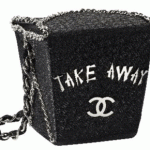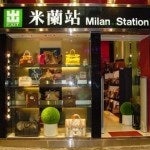Jing Daily’s Top Posts For The Week#
In case you missed them the first time around, here are some of Jing Daily’s top posts for the week of June 14-18:

Will Art Funds Miss The Benefits Of Global Diversification By Purchasing Only Western Art?
Last year, in the wake of the global economic crisis that saw asset values plummet across the board, a select number of art funds appeared on the scene, intent on satisfying demand for unique, diverse forms of investment. As the New York Times pointed out last fall, with investors indicating they were ready to get back in the game following signals that the worst of the crunch had passed, several new art funds have popped up in the last couple of years, some of them folding as the worst days of the crisis hit and others just starting up. However, as Jing Daily noted at that time, a weakness shared by some of these art funds was their propensity to overload themselves with Western — primarily American — artists, who are more vulnerable to shifting prices than some would think.
In the Times article, one fund in particular, Castlestone Management, was profiled as representative of the new breed of art fund, focusing primarily on postwar Western artwork.

FT: “New Self-Confidence” Fuels Luxury Demand In China#
The Financial Times has posted a good article on Shanghai’s ongoing luxury boom (covered extensively by Jing Daily), which has seen brands like Tiffany, Omega, Blancpain, Breguet, Louis Vuitton, and Ermenegildo Zegna opening lavish boutiques in the city since April alone. Although part of this was simply due to efforts by these brands to cash in on the millions of tourists who have poured into Shanghai for the Shanghai World Expo, major brands from around the world rightly see Shanghai as a city with long-term potential.
While they’ll have to contend with the popularity of Hong Kong shopping trips and online retail, these brands — which see China as “the next Japan,” since the country should indeed surpass Japan to become the world’s largest luxury market within five years — see heavy investment and strong brand presence in China as a must.

Club Med Looks To Make China Its Second-Largest Market On Heels Of Fosun Investment#
While the biggest story in the China tourism market at the moment is the country’s growing number of free-spending outbound tourists, several international companies have their sights set on China’s more inward-looking tourists. With domestic tourism — far more affordable for the middle class — expected to remain strong in the long term, some cities and resort towns have invested heavily in tourism infrastructure in recent years. Amid this investment, we’ve begun to see some established international tourism companies look to expand into mainland China in the hopes of tapping the country’s huge potential for domestic tourism both at the lower and high-end price points.
This week, the nearly 60-year-old French tourism specialist Club Mediterranee — better known as Club Med — became the latest of these companies, announcing that the Chinese conglomerate Fosun International had acquired a 7.1% stake in Club Med. According to Club Med, Fosun’s acquisition will help accelerate the rollout of the Club Med concept in China, and the company is projecting that China could become its second-largest market within only five years.

Xu Bing’s Phoenixes Make Their Way To Shanghai
This March, Jing Daily looked at the “Phoenix Project,” a pair of $3 million sculptures by top Chinese artist Xu Bing. Originally commissioned by Taiwan’s Ravenel auction house and purchased by super-collector Lin Baili (aka Barry Lam), Xu’s twin phoenixes were displayed in Beijing’s Central Business District (CBD). This week, as reported by Artinfo, the phoenixes made their way to the Shanghai Exposition Park, where visitors to the Shanghai World Expo feast their eyes on a rare sculpture project by one of the country’s best contemporary artists.
From Artinfo:
The phoenix has important connotations in both Eastern and Western cultures. As the second-most-respected legendary creature in China (right behind the dragon), the mythic bird is often seen in Chinese empresses’ residences, embodying an ideal image of femininity and eternity. Featuring LED lights, Xu’s two phoenixes illuminate the night sky of the Expo Park, adding a touch of festivity and divinity to the famed Shanghai night scene.

Second-Hand Luxury Market On The Rise In China
For some of China’s aspirational luxury buyers — typically lower-level white collar workers who have been known to subsist on instant noodles to save up for a particular handbag — the quiet growth of the second-hand luxury market has been something of a godsend. While consignment stores that specialize in high-end second-hand goods have been a fixture in Western markets and Japan for decades, they’re still in their infancy in mainland China. (Though they have existed in Hong Kong for somewhat longer.) However, online and physical stores selling second-hand luxury goods are “quietly rising” both in quantity and popularity, with no real limit to their potential.
From a recent Xinmin article (translation by Jing Daily team):
As the domestic Chinese luxury market continues to heat up, the second-hand luxury market is also quietly rising. Following recent research, this reporter found that there are many online stores specializing in second-hand goods, and although their prices are much lower than new boutiques, the profits they’re pulling in are really staggering.